42 how to read food labels diabetes
How to Read Food Labels When You Are Diabetic - Diabetics Weekly Study the Carbohydrate Content in Detail This is the most important aspect of how to read food labels when you have diabetes. The total amount of carbohydrates breaks down into complex carbohydrates, sugar, and fiber. Don't hone in on zero-sugar foods, as foods like milk and fruit contain natural sugars. Reading Food Labels | ADA - American Diabetes Association Put food labels to work. The Nutrition Facts labels on foods are really the key to making the best choices. We'll cover the basics so that these labels make shopping easier for you. You've heard it all. From carb-free to low-carb, to whole and empty carbs, it's hard to know what it all means. Blood sugar highs and lows aren't always ...
How to read nutrition facts labels - Diabetes Care Community Identify foods suitable to special diets (for example, low-sodium or low-fat diets). Find foods that will help you to increase or decrease your intake of a particular nutrient (for example, if you want to increase the amount of fibre, or decrease the amount saturated fat in your diet). 5 easy steps to reading a Nutrition Facts Table
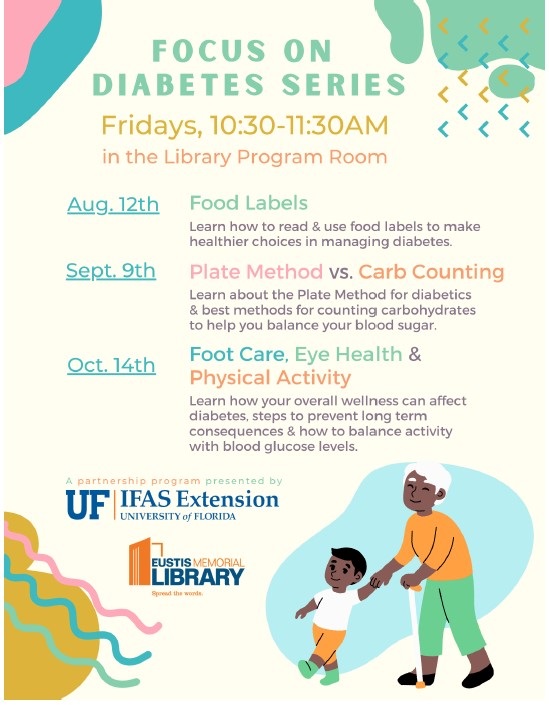
How to read food labels diabetes
Decoding Diabetes: How to Read Nutrition Labels | Accu-Chek The calories in the foods you eat are made up of fat, protein, and carbohydrates. Nutrition labels are typically made based on the assumption that you have a daily diet of 2,000 calories (kilocalories). Some labels will have a footnote that expand on this concept, providing numbers for both 2,000 and 2,500-calorie (kilocalorie) diets. Nutrients How to Read the New Food Label - The Johns Hopkins Patient Guide to ... On the new label, added sugars are listed under total sugars. The word "includes" is used before added sugars to indicate they are already included the grams of total sugars. Added sugars are from table sugar, syrups and honey, and sugars from concentrated fruit or vegetable juices. Keep added sugars as low as possible. Protein How to read nutrition labels on packaged foods At the bottom of the nutrition label you will find a footnote (*) section listing the daily value of the nutrients contained in the product. Note that it's based on a diet of 2000 calories per day. The latest changes to nutrition labels. Nutrition labels have changed over the years based on the prevailing research at the time.
How to read food labels diabetes. Reading food labels: Tips if you have diabetes - Mayo Clinic Look for foods with 3 or more grams of fiber. Put sugar-free products in their place Sugar-free doesn't mean carbohydrate-free. Sugar-free foods may play a role in your diabetes diet, but remember that it's equally important to consider carbohydrates as well. A sugar-free label means that one serving has less than 0.5 grams of sugar. Understanding food labels - Diabetes Ireland Understanding food labels ... All the ingredients are listed in order of their descending weight, this means that the food contains more of the ingredients listed ... Type 2 Diabetes Diet Food List And as you can see from the above diabetes food list, there are plenty of foods to choose from. Sure, they are not packaged and processed foods. But that’s good news because eating fresh, natural whole foods – real food – is only going to improve your health, and happiness. Please pin, tweet or share this info to help others. Thanks! How to Read Food Labels Without Being Tricked - Healthline A good rule of thumb is to scan the first three ingredients, as they make up the largest part of what you're eating. If the first ingredients include refined grains, a type of sugar, or...
Food Labels & Type 2 Diabetes | Level2 Sugar-free products. Sugar-free is important for managing diabetes, but pay attention to carbohydrates.If the label says sugar-free and there are fewer carbohydrates, you're good to go. If the choice is between a sugar-free product with just as many carbohydrates as a standard product, you're better off choosing based on price or taste. Nutri-Score vs 'health halo' effect: What food labels can do for us Aug 22, 2022 · The authors suggest the Nutri-Score label should be mandatory when making nutritional claims about a food item. Sugar is widely known as one of the most addictive substances in our diets. PDF Label Reading Basics for Diabetes - Veterans Affairs This food has 300 mg of sodium per ½ cup serving. It is suggested to limit salt intake to 1500 mg per day when you have diabetes. With pre-diabetes, your sodium intake should still be monitored. The goal is less than 2300 mg per day. A good first step is to not have a salt shaker at home. Total Fat The area on the label describing Food Labels and How to Read Them - Diabetesnet.com Packaged foods have a "Nutrition Facts" label that provides nutritional information, including the number of calories and the grams of protein and fat. These labels also give the exact number of grams of carbohydrate contained in a serving and the size of this serving.
Diabetes Food Label Reading: Quick Tips to Shop Smarter Stick to products that contain a maximum of 10 ingredients, 5 is even better. It's also good to understand that anything labeled "sugar free" can technically still have up to 0.5 grams of sugar per serving, so it's not always as straightforward as it seems. "Sugar free" and "no added sugar" does not mean carb free. PDF Label reading basics for diabetes - Veterans Affairs Label Reading Basics for Diabetes Nutrition and Food Services (05/2020) Serving Size • The serving size is the portion size used for all the values on the label. • Different foods have different serving sizes. • The serving size on this label is 2/3 cup. Servings per Container • Indicates the number of How to read food labels if I have diabetes or prediabetes? Knowing how to read food labels is a very useful skill to improve your eating and better manage or help to prevent the progression of diabetes. There are three main things on the food labels to look out for: nutrition information panel, ingredient list, and Healthier Choice Symbols. 1. Nutrition information panel (NIP) Food Labels | Nutrition.gov Food and Drug Administration (FDA) regulates the safety of food for humans and animals, including foods produced from genetically engineered (GE) plants, sometimes referred to as "genetically modified organisms" (GMOs). Find out more about the safety of GE plants, and how they are regulated here.
Warning labels on front side of food packs a must: Experts 18.8.2022 · CHENNAI: Processed food manufacturers must be asked to print warning labels on the fronts of packets in clear, simple, interpretive terms indicating the presence of high salt, sugar or fat, CAG ...
Food Labels | CDC - Centers for Disease Control and Prevention Sep 20, 2022 · Understanding the Nutrition Facts label on food items can help you make healthier choices. The label breaks down the amount of calories, carbs, fat, fiber, protein, and vitamins per serving of the food, making it easier to compare the nutrition of similar products. Be sure to look at different ...
How to Read Nutrition Labels When You Have Diabetes - WebMD Getting Past the Guilt of Type 2. See how one patient learned to manage her weight and diet.
Diabetes Food Hub From the nutrition experts at the American Diabetes Association, Diabetes Food Hub® is the premier food and cooking destination for people living with diabetes and their families. 2451 Crystal Drive, Suite 900, Arlington, VA 22202. 1-800-DIABETES 1-800-342-2383. Diabetes ...
Reading Food Labels When You Have Diabetes - WebMD May 16, 2021 — Every product should list all the ingredients in it. They're in order from the largest to smallest amount, by weight. This means a food is made ...
Understanding food labels fact sheet - NDSS Labels on packaged foods provide information that can help you make healthier food choices. Making healthy food choices can help you to manage your diabetes, weight, and overall health. Understanding how to read food labels can help you choose foods with more fibre and less saturated fat, salt (sodium), added sugars and kilojoules.
Learning To Read Labels :: Diabetes Education Online On a nutrition food label, subtract the fiber from the total carbohydrate amount. When you read food labels, the grams of sugar are already included in the total carbohydrate amount, so you do not need to count this sugar amount separately. The grams of sugar listed include both natural sugars, from fruit or milk, and added sugars.
PDF TO CARE 4 YOURSELF READING A NUTRITION FACTS LABEL - novoMEDLINK Talk with your diabetes care team about how many calories you need each day. Then use this line to see if the food fits into your plan. You can read the Nutrition Facts labels to compare calorie counts of similar foods to find the lowest-calorie option. Total fat This line tells you how much fat is in a serving of this food.
Understanding food labels | Diabetes UK Follow these tips to become expert at understanding labels in minutes: With traffic light labels, go for green, occasionally amber, and red only as a treat. Reference intake (RI) percentages are given per portion, and indicate how much the portion contributes to the amount of calories, fat, sugars and salt an average adult should have each day.
Food Labels | Know Diabetes Health claims on labels: what they mean Health claims on labels can mean different things on different products, which can be confusing. The list below provides information that can help you understand common health claims that you will find on food labels. Sugar No added sugar/Unsweetened. No sugar has been added to the product.
How to Read Food Labels | mySugr Before reading the rest of the label, look at the serving size. The rest of the information — such as carbs, calories, sugars, fiber, and more — will be based on the serving size that's listed. Eating more than a serving size means you'll get more carbs, sugars, and calories than what's listed.
PDF how To Read food labels HoW To ReaD FooD LaBeLs You don't even have to look at "Sugars" on the label. Try choosing foods that are less than or equal to 25 grams of total carbohydrate per serving. Choose foods that have 3 or more grams of fiber per serving. step 3. look at the "Calories" and the "Total fat." Try choosing foods that are 0-3 grams of total fat for every 100 calorie serving.
Reading Food Labels to manage Diabetes - Making Diabetes Easier When reading the label of food packaging, it's helpful to also be mindful of the salt content and fatty acids. Eaten in large quantities, salt causes hypertension and kidney complications and fatty acids can lead to cardiovascular problems. It can also be helpful for people with type 2 diabetes to keep track of overall calorie intake because ...
Diabetes | Nutrition.gov Read about diabetes symptoms, tests, and management for older individuals. What People With Diabetes Need to Know About Osteoporosis HHS , National Institutes of Health , National Institute of Arthritis and Musculoskeletal and Skin Diseases , Osteoporosis and Related Bone Diseases National Resource Center
Guide to Reading Food Labels with Diabetes | Better Health Kare As another good tip, when reading food labels with diabetes disease, pay attention to high-fiber foods. Fiber is the best ally for diabetic patients is it helps reduce the absorption of simple carbohydrate s. Try to stick to foods that contain at least 3 grams of fiber per serving. It is also important to remember that when the ADA recommends ...
Reading labels | Diabetes UK Key points Always look at the 'total carbohydrate' on the label when carb counting. This will make sure you are counting both the complex (starchy) and simple (sugary) carbs in your food. Both will raise your blood glucose (blood sugar) levels, and need to be matched with insulin.
Understanding Food Labels | The Nutrition Source | Harvard T.H. Chile implemented the Law of Food Labeling and Advertising in 2016, comprised of mandatory front-of-package (FOP) warning labels, restrictions on child-directed marketing, and the banning of sales in schools of all foods and beverages containing added sugars, sodium, or saturated fats that exceeded set nutrient or calorie thresholds. [1]
Reading Food Labels When You Have Diabetes | HealthLink BC Start with the "% Daily Value" column on the food label. A food is considered low in a specific nutrient (such as fat, saturated fat, cholesterol, carbohydrate, or sodium) if it has 5% or less of the daily value. A food is considered high in that nutrient if it has 15% or more of the daily value. Watch out for health claims on food labels.
Reading food labels & nutrition panel - Diabetes Queensland Reading food labels When choosing packaged food, choose products with: lower energy (kilojoules) if you are trying to lose weight lower total and saturated fat lower sugar lower sodium higher fibre Every food label tells a story and the Nutrition Information Panel simply gives you the facts.
How to read food labels | healthdirect Sugar: Sugar is a type of carbohydrate. It is better to choose healthier carbohydrates and to limit foods that are high in added sugars. Fibre: High fibre foods such as wholegrain bread and cereals improve digestion and help you to feel full. Sodium: This tells you how much salt the product contains. Eating too much salt is linked to high blood pressure and can lead to heart disease, …
How to read nutrition labels on packaged foods At the bottom of the nutrition label you will find a footnote (*) section listing the daily value of the nutrients contained in the product. Note that it's based on a diet of 2000 calories per day. The latest changes to nutrition labels. Nutrition labels have changed over the years based on the prevailing research at the time.
How to Read the New Food Label - The Johns Hopkins Patient Guide to ... On the new label, added sugars are listed under total sugars. The word "includes" is used before added sugars to indicate they are already included the grams of total sugars. Added sugars are from table sugar, syrups and honey, and sugars from concentrated fruit or vegetable juices. Keep added sugars as low as possible. Protein
Decoding Diabetes: How to Read Nutrition Labels | Accu-Chek The calories in the foods you eat are made up of fat, protein, and carbohydrates. Nutrition labels are typically made based on the assumption that you have a daily diet of 2,000 calories (kilocalories). Some labels will have a footnote that expand on this concept, providing numbers for both 2,000 and 2,500-calorie (kilocalorie) diets. Nutrients
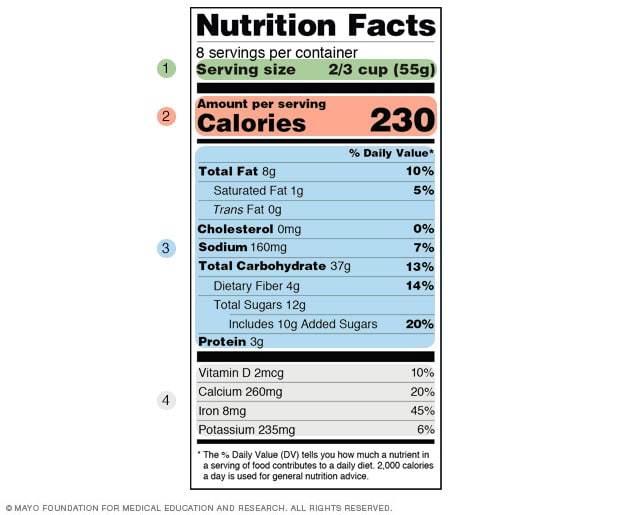

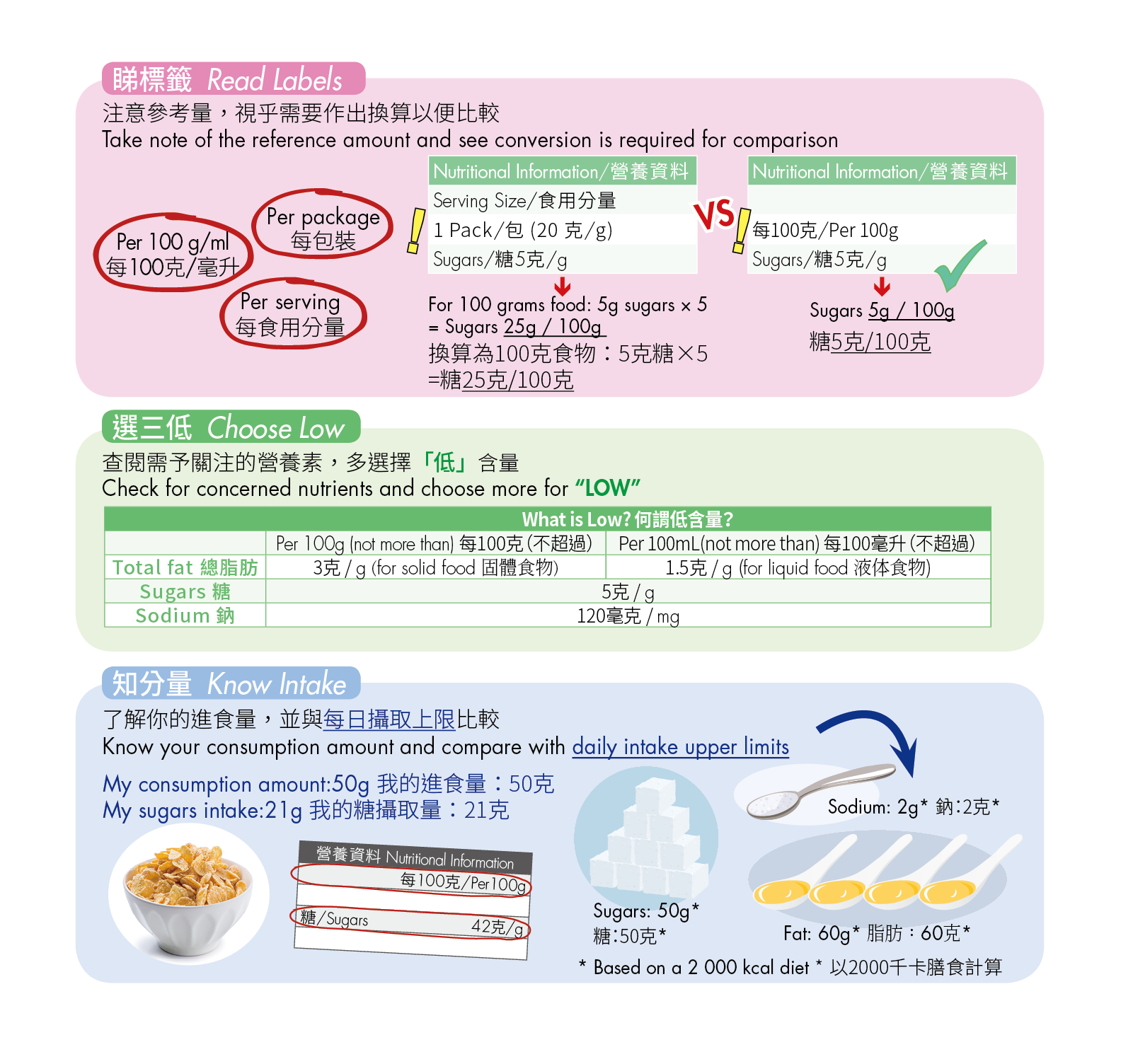
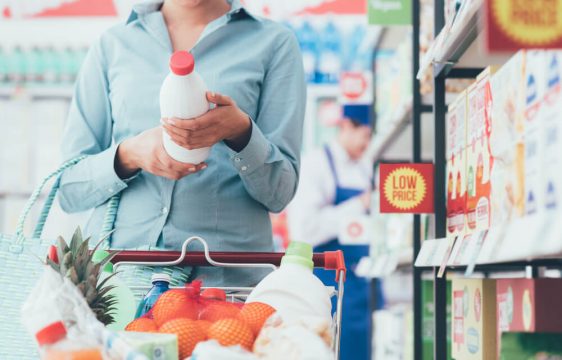
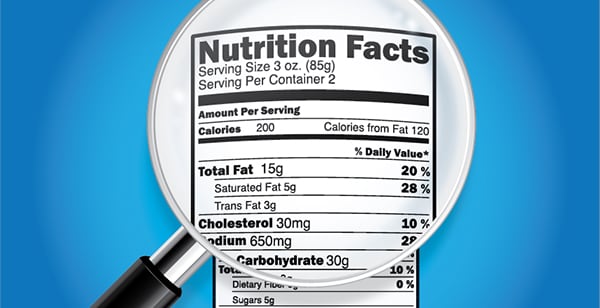
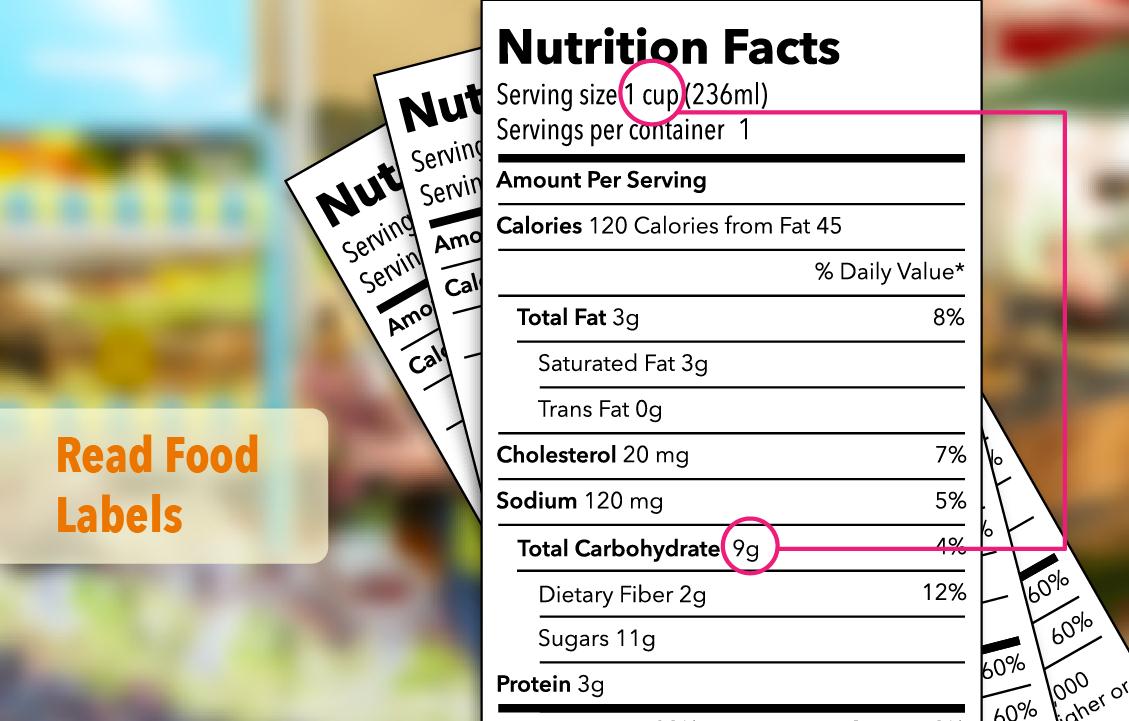




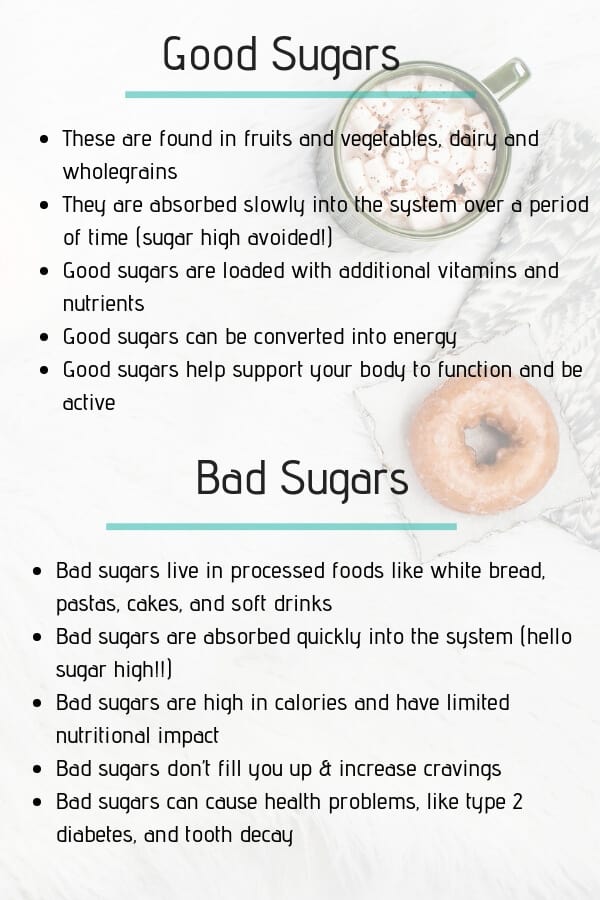

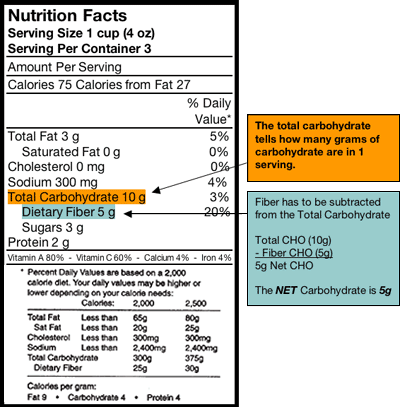
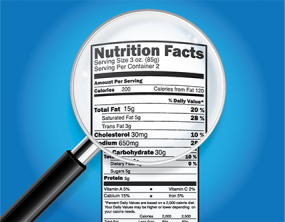
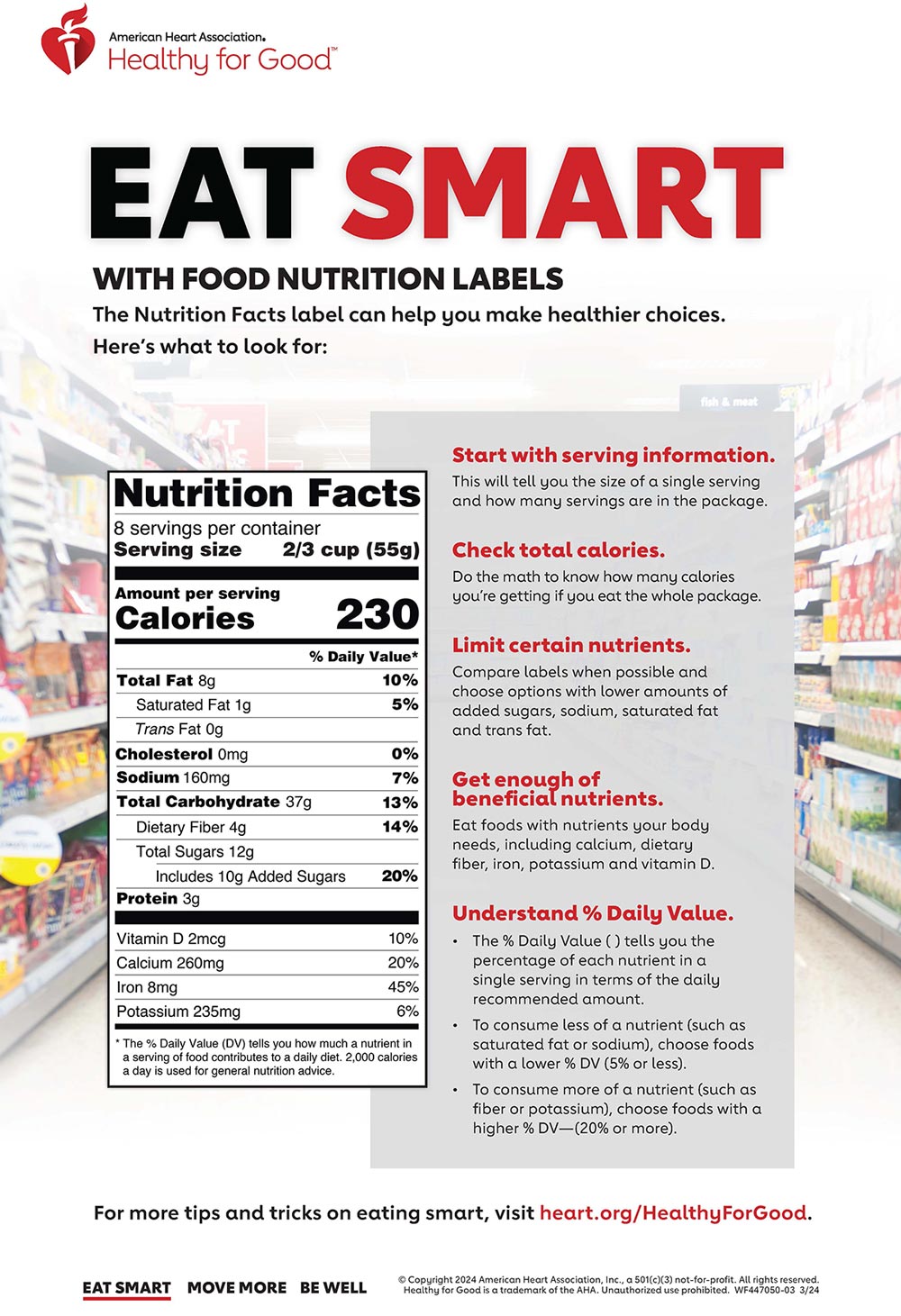


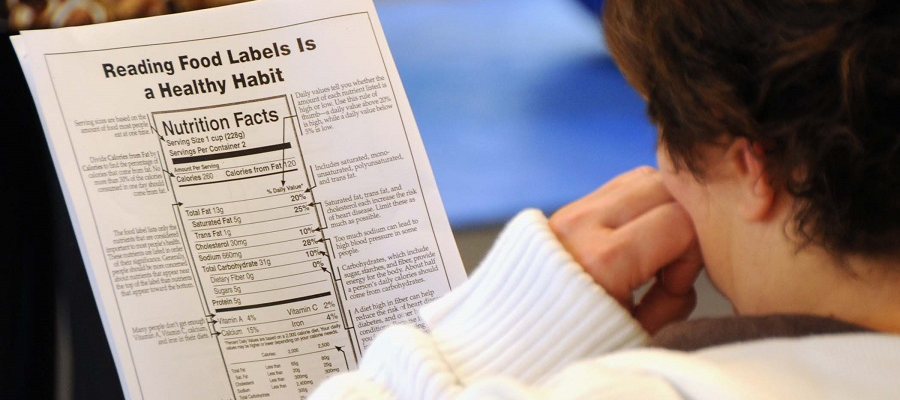

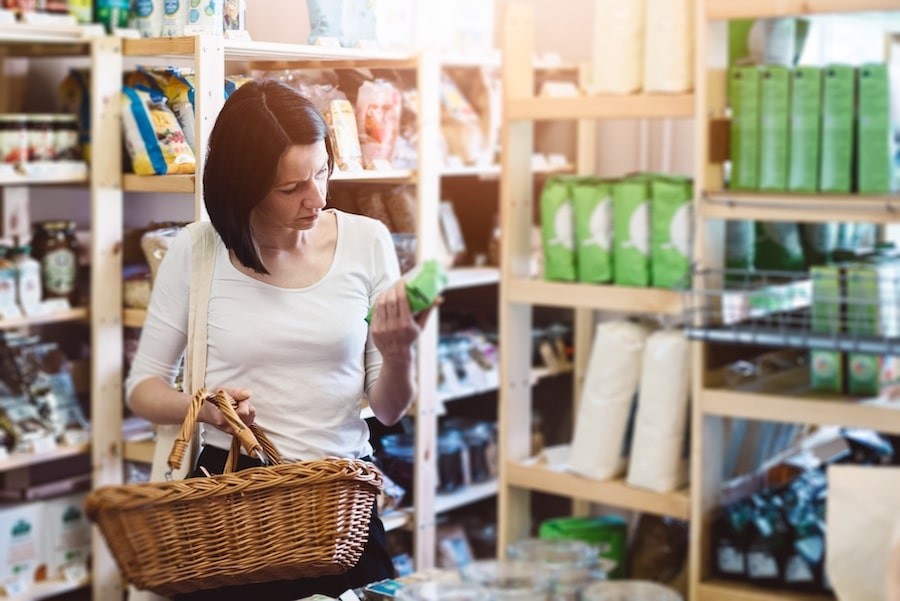
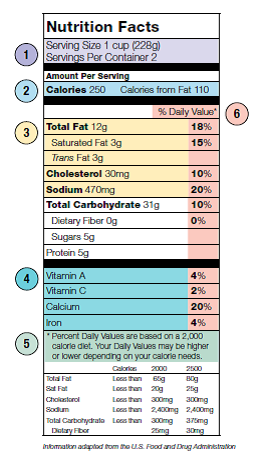
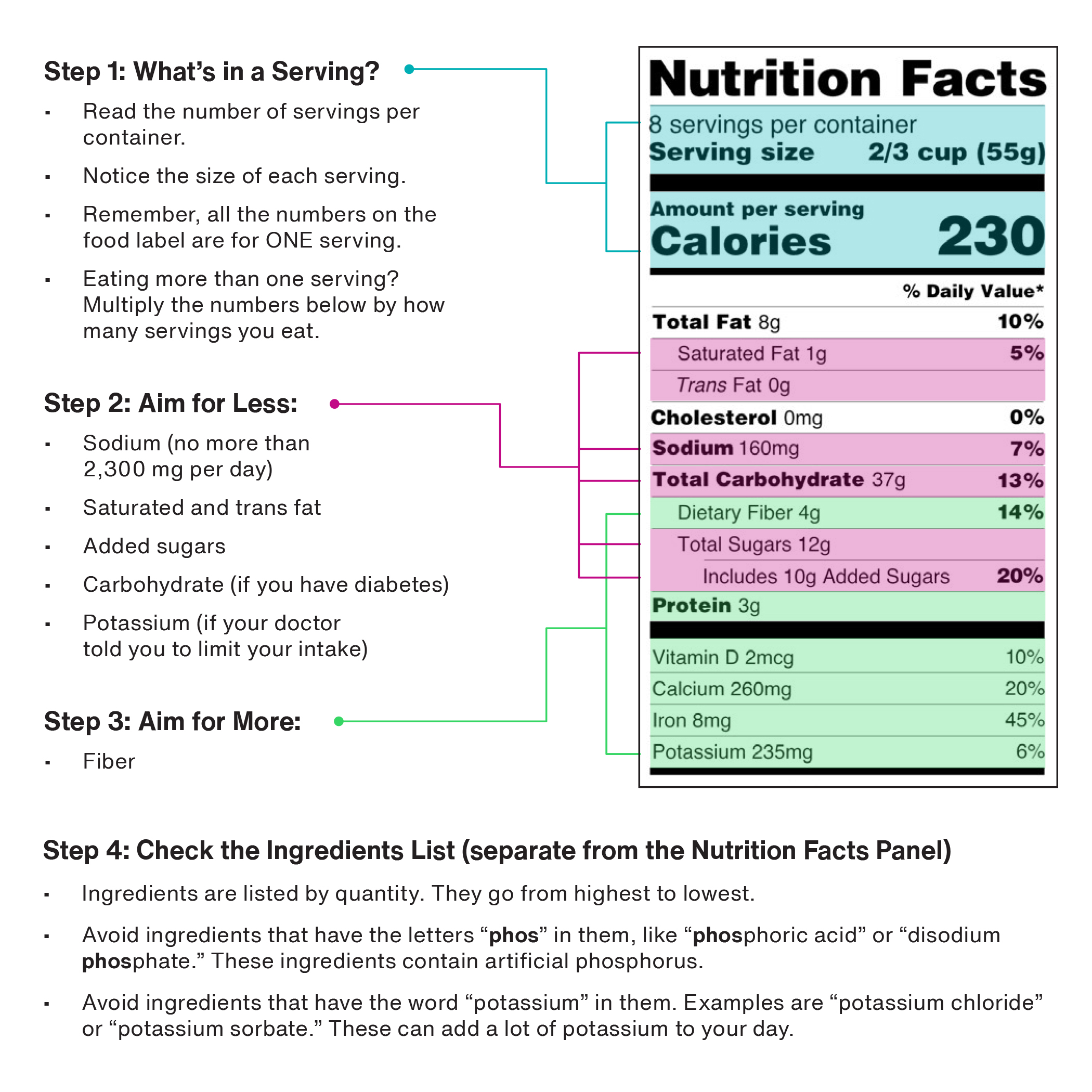
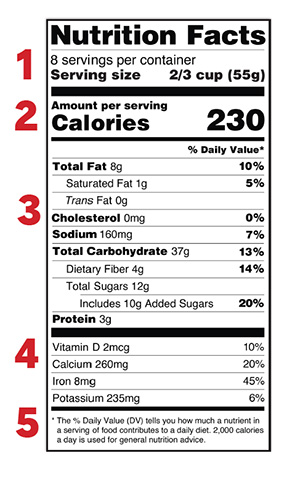


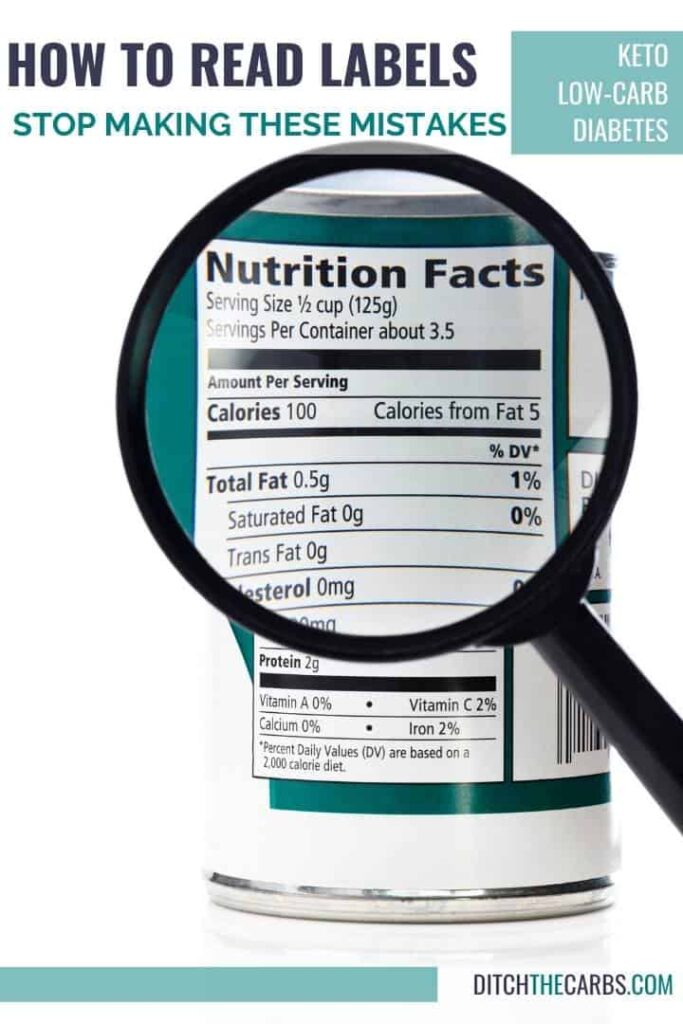
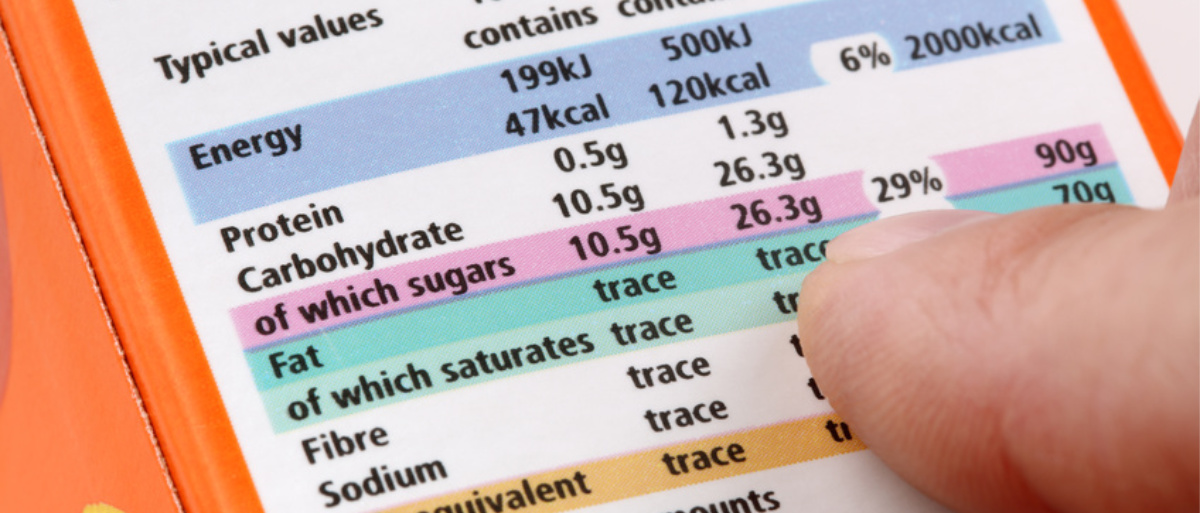
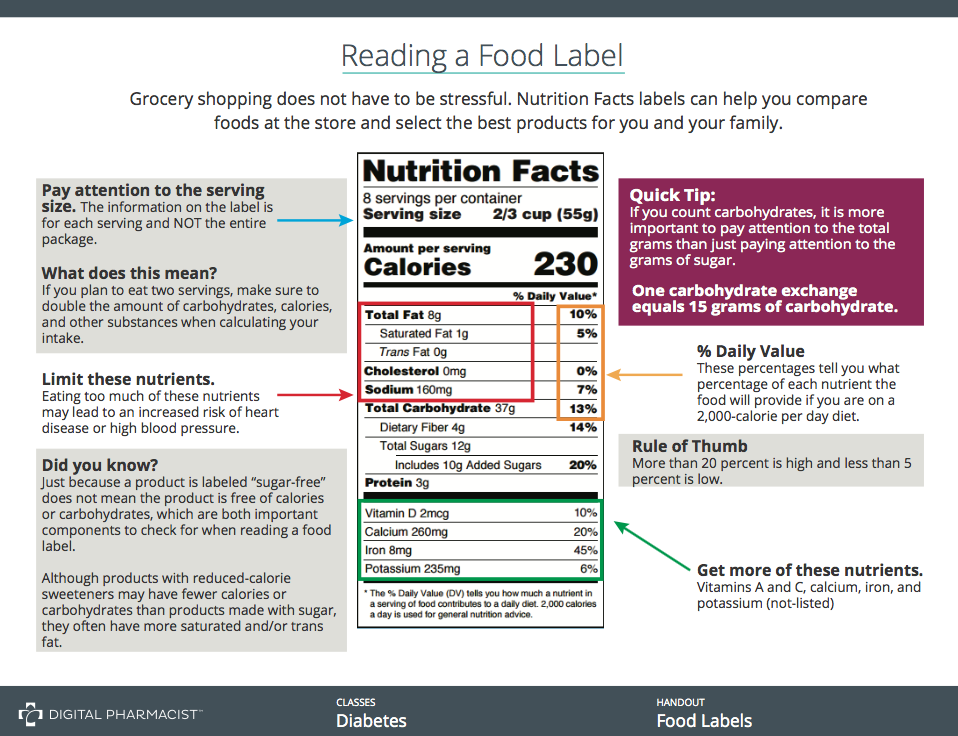

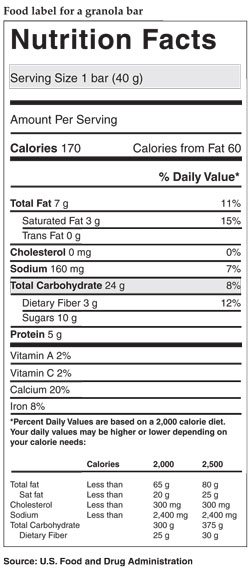




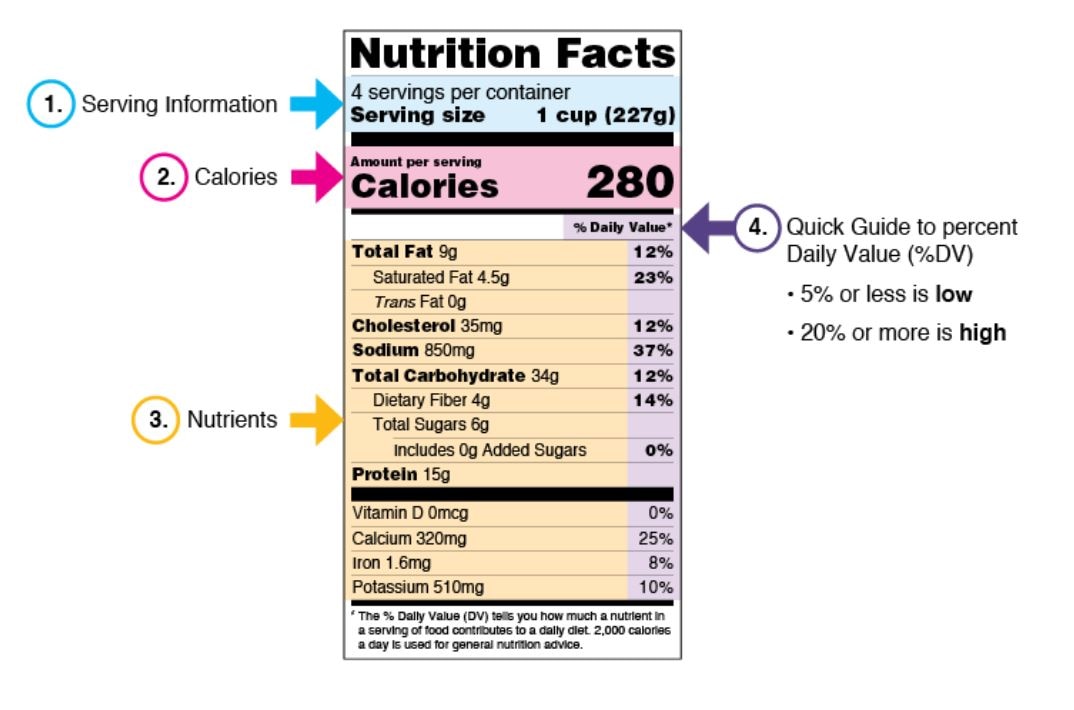

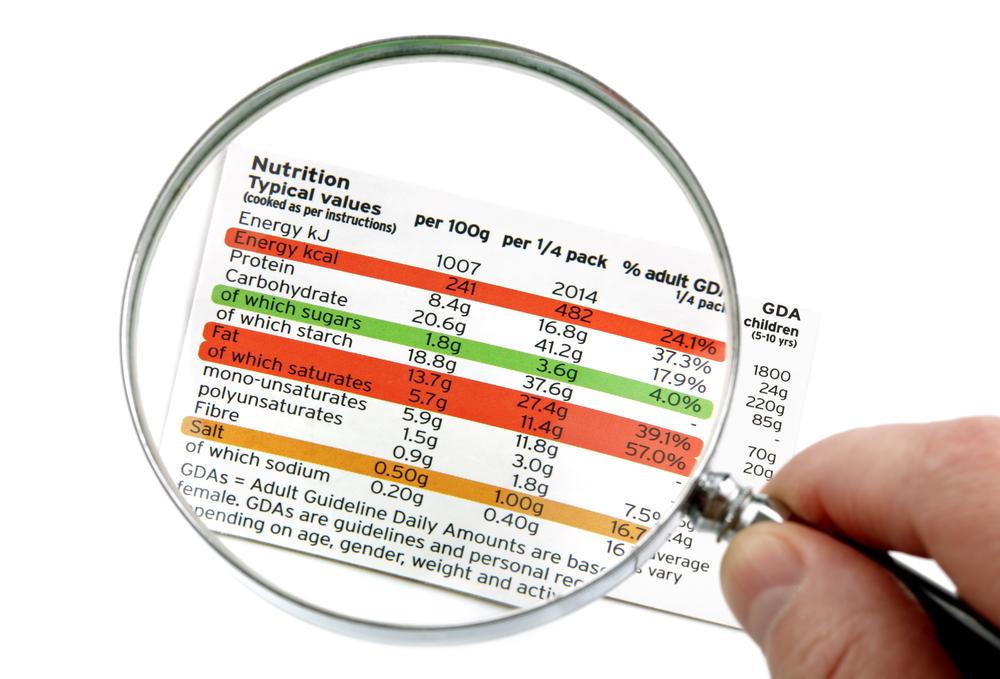
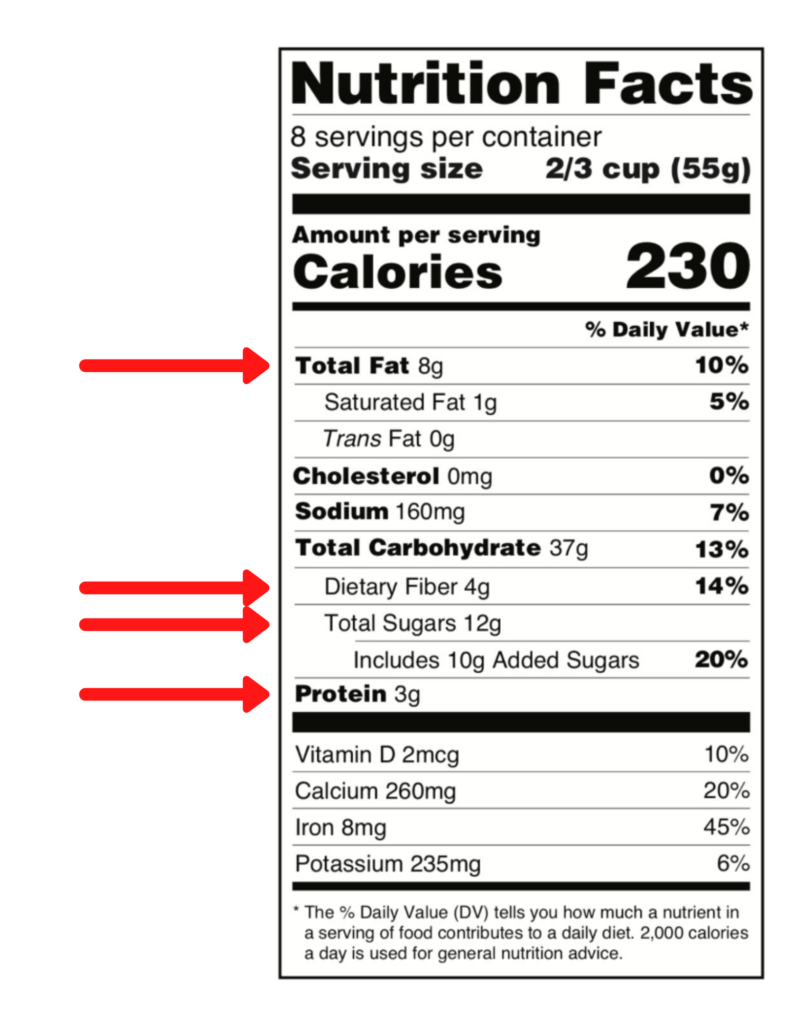
Post a Comment for "42 how to read food labels diabetes"